How do subject and object complements differ?
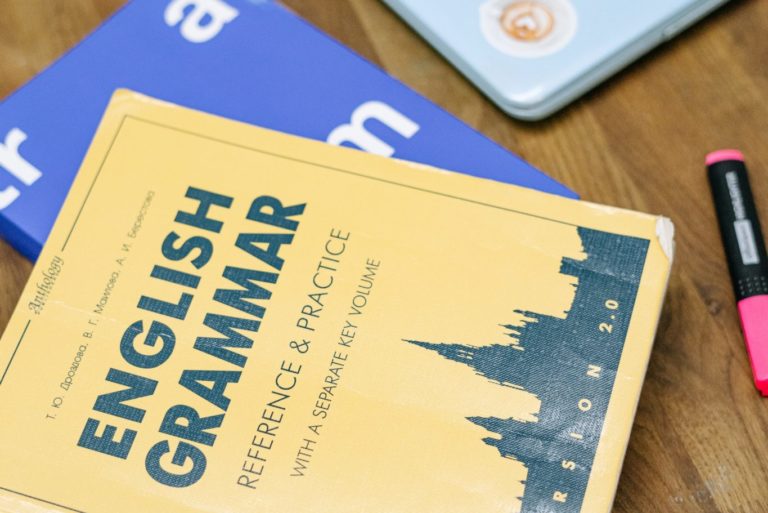
This is the third and final chapter about Adverbials and Complements. To complete this reader, read each chapter carefully and then unlock and complete our materials to check your understanding.
– Review the basic grammar of complement phrases in English
– Understand how subject and object complements are formed
– Discuss the importance of complements in academic writing and in English for academic purposes (EAP)
Before you begin reading...
-
video and audio texts
-
knowledge checks and quizzes
-
skills practices, tasks and assignments
Chapter 3

Having now explored the adverbial phrase function in considerable detail, this third and final chapter on the topic of adverbials and complements focuses on the latter – specifically exploring their subject and object alternations. Using grammatical examples, we review the form, function and distribution of these two types of complement phrase in English and discuss their use in academic contexts. After completing this final chapter, consider unlocking, downloading and filling out our related Chapter 1-3 Worksheets to check your progress and understanding of this topic and improve your academic-English ability.
What are the basics of complement phrases?
It’s important to first recognise that complements may be composed of words, phrases or clauses and that their function is to modify the subject or object of a sentence. This is done either by equating that subject or object with another label (such as how ‘James’ = ‘teacher’) or by providing it with additional information.
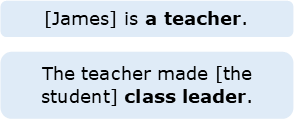

As these examples additionally show, once we remove the bold complement from the clause, the grammar and meaning of the expression becomes broken or incomplete. Therefore, and as is the case with most phrase functions in English (except for adverbials), complements can be considered as being mandatory functions within a clause.
How many types of complement exist?
There are primary two types of complement in English: subject and object. If you’ve taken our short reader on subjects and objects, you should already know that:
- subjects are usually placed before the verb phrase while objects are placed after it
- subjects are usually the doer of the action of the verb while objects are the receiver
- both subjects and objects are most commonly made from simple or complex noun phrases
Let’s return to our previous examples to see these alternations in action. In the below examples, note how ‘James’ (A) and ‘the teacher’ (B) are the subjects of the expressions and that only one clause (B) possesses an object (‘the student’):
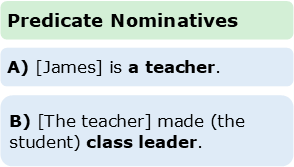
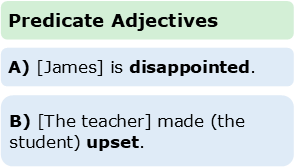
What these examples highlight for us is that subject and object complements can be generally divided into two secondary types based on their function. There are predicate nominatives in which the complement provides another name for a subject or object (such as how ‘teacher’ is another label for ‘James’) and there are predicate adjectives in which the complement offers more information about that noun phrase (such as how ‘James’ is ‘disappointed’).

How are subject and object complements formed?
There are two important aspects to remember when correctly forming subject and object complements. The first involves paying attention to the type of words, phrases or clauses which complements can be built from (as not all word types, are acceptable), and the second is knowing which types of verbs require which type of complements in order to be grammatical.
The following table shows how subject complements may be broadly formed from a variety of elements, namely adjectives, pronouns, noun phrases, prepositional phrases and noun clauses:
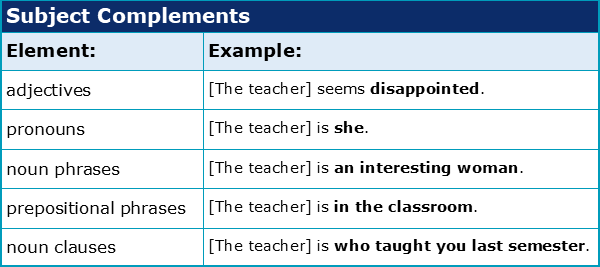
What this table also shows is that subject complements must directly follow copular verbs such as ‘act’, ‘appear’, ‘be’, ‘become’, ‘feel’, ‘grow’, ‘sound’ and ‘taste’. Copular verbs (also known as linking verbs) effectively place an equals sign (=) between the subject and its complement, equating them with each other in meaning.
Object complements, on the other hand, are composed of a wider variety of elements and may be followed by a wider variety of verbs. Unlike the copula verbs of subject complements, the verbs of object complements (such as ‘find’, ‘make’ and ‘want’ in the examples below) must be transitive and possess a direct object:
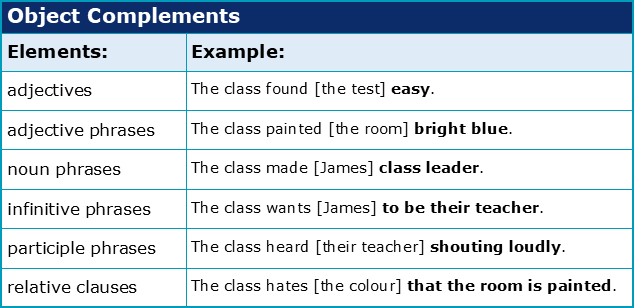
Are complements useful in academic writing?
Finally, and quite unlike the adverbial conjuncts and disjuncts described in Chapter 2 of this reader, it’s worth mentioning that there are no specific complement structures which are unique to academic language or EAP. Students should simply remember to proofread their essays and presentations carefully before submission to make sure that every complement is correctly formed, distributed and spelled. Good luck!
Downloadables
Once you’ve completed all three chapters in this short reader about Adverbials and Complements, you might then wish to download our Chapter Worksheets to check your progress or print for your students. These professional PDF worksheets can be easily accessed for only a few Academic Marks.
Chapter 1 explores the topic: What are adverbial and complement phrases? Our Chapter 1 Worksheet (containing guidance, activities and answer keys) can be accessed here at the click of a button.
Chapter 2 explores the topic: Are adverbials helpful in academic English writing? Our Chapter 2 Worksheet (containing guidance, activities and answer keys) can be accessed here at the click of a button.
Chapter 3 explores the topic: How do subject and object complements differ? Our Chapter 3 Worksheet (containing guidance, activities and answer keys) can be accessed here at the click of a button.
To save yourself 2 Marks, click on the button below to gain unlimited access to all of our Adverbials and Complements Chapter Worksheets. This All-in-1 Pack includes every chapter, activity and answer key related to this topic in one handy and professional PDF.
Collect Academic Marks
-
100 Marks for joining
-
25 Marks for daily e-learning
-
100-200 for feedback/testimonials
-
100-500 for referring your colleages/friends